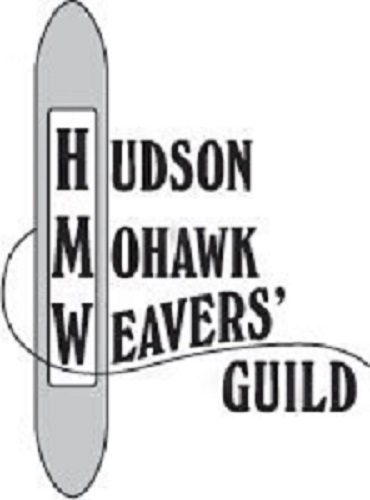Alber, Anni, On Weaving. Former member of Bauhaus published this book in 1960s, but it still
offers fresh advice to weavers. Reviewed by Renee Green
Goldenberg and Patrick, Simple Woven Garments. Great ideas for weaving and finishing
garments. Reviewed by Dane Warde
Osterkamp, Peggy, Series of books including Winding a Warp & Using a Paddle, Warping Your
Loom & Tying On New Warps, and Weaving & Drafting Your Own Cloth. Great how-to books whichtroubleshoot for weavers of all levels. Reviewed by Karen Tenney
Brusic, Lucy, A Crackle Weave Companion: Exploring Four-Shaft Crackle, Kirk House, 2012. This
book is a good introduction to block weaves. The thesis of the book is that crackle drafts can be treadled with many different treadlings- not just “trompe as written”. Brusic shows how treadlings can be mixed and matched. For instance, she shows how Mary Atwater’s Wild Waves can be treadled with the Whirling Spindles lift plan. As she transcribes those traditional Atwater and Dawson drafts into simple ABCD blocks, she corrects errors in the originals. Whether you favor traditional or contemporary designs, this lavishly illustrated book is a terrific resource for the four-shaft weaver. I recommend that the library purchase this book. Reviewed by Nancy Ross
Collingwood, Peter, Rug Weaving. She recommends reading from beginning to get an
understanding of Collingwood’s use of language. Wonderful rug finish-ing techniques are given
in the back of the book. Reviewed by Nancy Sharples.
Robson and Ekarius, Fleece and Fiber Sourcebook, Storey Publishing, 2009. This book was
recommended by Mary Jeanne Packer of Battenkill Fibers at our October 2015 meeting. It is as
she says- a beautiful coffee table book that is an encyclopedic review of more than 200 breeds of sheep and the fiber they produce. The book is divided into seven sections, each featuring a family of sheep: Blackfaced Mountain, Cheviot, Dorset, Down, English Longwool, Feral, and Merino. The introductory chapter outlines the benefits of wool vs. other fibers, provides a glossary of terms, as well as a starter guide to breed-specific wools, categorized as soft, reliably versatile, sturdy, and “to spur your creativity”. Each breed is listed with history of the breed, facts (fleece weight, staple length, fiber diameters, lock characteristics, and natural colors), and suggested uses for wool. There are photos of animals, as well as close-ups of yarn, a woven swatch, and clean and raw fleece. While I think this book is aimed primarily as shepherds and spinners, it would be a good candidate for the Guild library. Reviewed by Nancy Ross
Doyle, Tracy, Patterns from Finished Clothes, Sterling, 1996— HMWG online library catalog does
not list this book, but I’m sure I’ve seen it on the shelf. I have successfully used this book to make patterns from some of my favorite garments—without having to open a single seam. Doyle begins by showing how to make a shirt pattern by pinning the garment to a cardboard sheet and tracing the outline onto paper using a special tracing wheel. She shows how to manipulate the garment to capture darts and curves, and other areas that will not lie flat. She also shows how to make a pattern from skirts and slacks, and how to make waistbands, cuffs, pockets, and facings. The instructions are clear and easy to follow. Reviewed by Nancy Ross
West, Virginia M., Finishing Touches For The Handweaver. This book is a study of finishing details for handwoven articles. Divided into six sections, this book discusses ways to secure fringe, decorative fringes, weaving fringe on the loom, details for bags, joining widths of handwoven materials, and embroidery techniques as finishing touches. This is my “go to” book when I want to put a special finishing touch on my handwovens. The directions are clear, the techniques are outlined in steps and demonstrated with graphics and or photographs. Reviewed by Mary Ellen Singer

